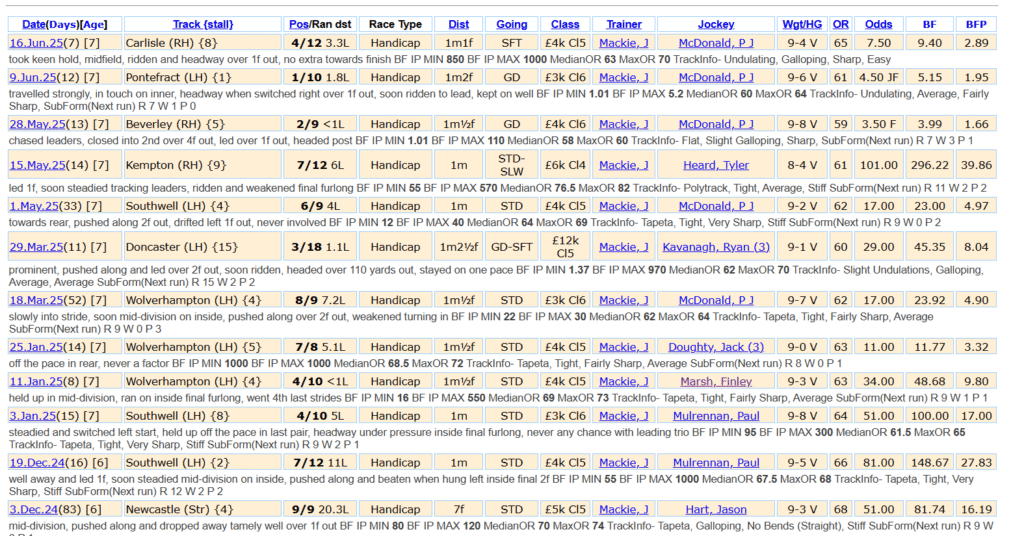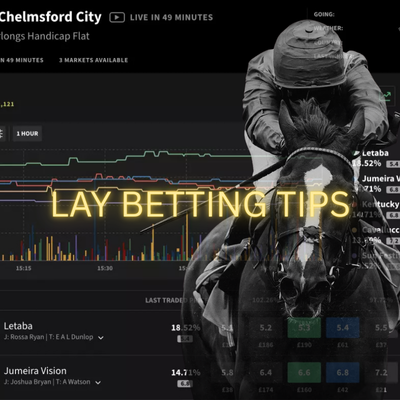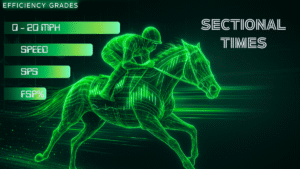Suitability Over Form: The Smarter Way to Analyze Horse Racing Form
Suitability Over Form: What You Should Really Look For in Horse Racing
In the exhilarating, often complex world of horse racing, “form” is frequently heralded as king. We meticulously pore over racecards, analyse past performances, and scrutinise those terse sequences of numbers and letters like ancient texts. A bold string of ‘1’s looks undeniably glorious; a disheartening run of ‘0’s or ‘P’s seems to write a horse off entirely. And while these raw form figures are undeniably important – they are, after all, the horse’s resume – there’s a deeper, more sophisticated truth that truly separates the casual punter from the seasoned, successful analyst: true suitability for today’s specific race trumps mere historical form on paper, every single time.
This isn’t to say you should ignore a horse’s recent results; far from it! They are your starting point. But a blind, unquestioning reliance on “good form” can be a dangerous and costly trap. A horse might boast an impressive string of wins, but were those victories achieved under conditions vastly different from today’s race? Perhaps they were on a forgiving surface, against weaker opposition, or over a distance that no longer suits? Conversely, a horse with seemingly poor form – a string of disappointing finishes – might be a hidden gem, poised to explode into action when the stars, or rather, the specific conditions and circumstances of this race, finally align.
So when you’re studying the racecard, what should you really be looking for beyond the superficial sheen of recent results? It’s about building a compelling case for the horse that is most suitable for today’s unique challenge, peeling back the layers to understand the true context of their past performances.
Beyond the Numbers: The Layers of Suitability in Horse Racing Form
To truly assess a horse’s suitability, you need to dig into these critical factors, putting the raw form figures into a meaningful context:
Race Conditions: The Non-Negotiables that Define a Horse’s Theatre
Distance: This is fundamental. Has the horse won or run exceptionally well over this exact distance before? Consider that even a furlong more or less can make a huge difference to a horse’s stamina or speed profile. A proven sprinter suddenly pushed to a staying trip, or a dour stayer dropping back to a sharp mile, is rarely a good bet, no matter how impressive their last run over a different trip looked. Look for the “D” (proven winner at this distance) or “CD” (proven winner at this course and distance) symbol on the card as a strong positive indicator.
Going (Track Condition): This factor is paramount, often being the single biggest variable that can change a race’s outcome and is frequently overlooked by less experienced punters. A “soft-ground horse” (often identified by past wins on heavy or soft going) will almost certainly flounder on firm ground, and a “fast-ground specialist” (who relishes quick ground) will literally sink in the mud. Always check the current going at the course (e.g., at Nottingham or Southwell today, which might differ sharply from a track like Newmarket or Ascot) and meticulously compare it to the horse’s best past performances. A horse with a string of ‘1’s on soft might be a ‘0’ on firm, and vice versa.
Course: Some horses undeniably love certain tracks, while others consistently perform poorly, regardless of their overall form. Look for the “C” (proven course winner) or “CD” symbol. Undulations, sharp bends, unique cambers, and specific gradients can all play a significant role in a horse’s performance. A horse that thrives on a tight, turning track (like Chester) might be completely lost on a long, galloping straight course (like Doncaster or Newbury). Course specialists often defy seemingly superior form.
Class of Race: Horse racing operates on a graded system, and class dictates the level of competition. Has the horse been racking up wins in lower grades (e.g., Class 5 or 6 handicaps) and is now stepping up significantly in company to a Class 2 or 3? Or, conversely, is a once-elite horse, perhaps past its prime, finally dropping down in class to a level where it can realistically compete? A string of ‘1’s in a weak maiden or a low-grade handicap doesn’t automatically translate to success against hardened, higher-class rivals. Always consider the context of the opposition’s quality.
Weight Carried: In handicaps, weight is the great equaliser, designed to give every horse a theoretical chance. A horse that has gone up significantly in official rating (OR) due to recent wins will be carrying more weight today, making its task considerably harder. It needs to have improved markedly to offset that increased burden. Conversely, a horse that is dropping in weight compared to its last run, or has been well-handicapped by the official handicapper, could be a very appealing prospect, representing significant “value” based on its new weight.
Recent Performance: The Crucial Context Behind the Numbers
How were those wins achieved? Did the horse merely scrape home by a nose against weak opposition, or did it win decisively, pulling clear of a solid, in-form field? The manner of victory can tell you more than the fact of victory.
Why did it lose? A ‘0’ (unplaced) or ‘P’ (pulled up) in the form string can be incredibly misleading. Did the horse encounter significant trouble in running (e.g., getting blocked, pushed wide), get stuck on the wrong side of the track (where the ground was worse), or simply hate the conditions on the day? Many reputable form guides now provide crucial comments that explain these factors. Always look for genuine “excuses” in poor runs — these can often signal a horse that is ready to bounce back with a vengeance under the right circumstances.
Pace of the Race: This is a subtle yet powerful factor. Did the horse benefit from a strong early gallop that perfectly set up its late kick, allowing it to sweep past tiring rivals? Or was it a dawdling crawl that exposed its lack of tactical speed or natural early pace, leaving it flat-footed when the race finally began in earnest? Understanding the likely pace scenario in today’s race (e.g., if there are many front-runners or confirmed hold-up horses) can reveal which horses are genuinely suited for today’s scenario, and which will be at a disadvantage.
The Power of Sectionals: This is where you truly lift the lid on a horse’s performance, moving beyond the superficial to the granular. Sectional times break down a race into segments (e.g., the first quarter, the last three furlongs, the final furlong), providing invaluable insight into how a horse ran. They answer critical questions:
Sustainable Pace: Did the horse go too fast early, setting a blistering pace that was unsustainable, causing it to “blow up” and fade dramatically in the closing stages? Or did it finish remarkably strongly, suggesting it had much more to give if the pace had been quicker, or indicating strong underlying stamina?
Hidden Form: A horse might have finished mid-division or even further back, but if it recorded one of the fastest final sectional times in the race, this is a huge positive. It suggests the horse was travelling well but perhaps lacked the early speed to get into contention, got caught in traffic, or was unsuited by a slow pace. This “hidden form” often points to a horse that is well-suited to a stronger pace or a slightly longer trip next time and can be a huge source of value.
Identifying “Closers” and “Front-Runners”: Sectionals clearly highlight a horse’s preferred running style. A horse that consistently records blistering final furlong times is a true “closer,” thriving on a strong pace up front to chase. Conversely, a horse that sets exceptionally fast early fractions and then consistently fades is a dedicated “front-runner” whose ideal scenario is a slow early pace, allowing them to dominate from the outset. Understanding these styles is crucial when predicting race dynamics and how a race might unfold.
Relative Performance: Crucially, compare a horse’s sectionals not just to the winner, but to other horses in the race. Sometimes, a runner that finished second, third, or even fourth might have put in a more impressive sectional performance (e.g., quicker final two furlongs) than the winner, indicating it’s the horse with the most progression and the one to follow closely in its next outing. Many modern form tools now provide detailed sectional data, transforming what was once a niche, time-consuming analysis into an accessible and powerful edge for the informed punter.
Physical Condition & Well-Being: The Less Obvious but Vital Cues
Time Since Last Run (Race Spacing): Horses vary wildly in their ideal race spacing. Some horses thrive on quick turnarounds (e.g., 7-14 days), maintaining their fitness and sharpness. Others need considerably more time to recover and prepare (e.g., 30+ days). A long absence followed by a strong run can sometimes trigger the “bounce” effect next time out, where a horse performs below par after a big effort on its return. Understanding a horse’s individual needs here is key.
Trainer and Jockey Form: Is the stable currently “hot” – sending out winners consistently? Has the jockey been riding with exceptional confidence and skill recently? A confident, in-form trainer and jockey combination can make all the difference, indicating that the horse has been prepared meticulously and will be given every chance in the race. This collective “form” of the team is often a strong indicator of suitability.
Equipment Changes: This is a powerful signal from the trainer. First-time blinkers, tongue-ties, cheekpieces, or even a change of bit can indicate a deliberate attempt to sharpen a horse up, correct a specific issue (like hanging or a breathing problem), or unlock latent ability that the trainer believes is there. These changes are a strong declaration that the trainer believes this modification will make the horse more suitable for racing today.
Paddock Appraisal (Pre-Race Look): For on-course punters, this is truly gold dust, providing a final, invaluable layer of insight that numbers alone cannot capture. Does the horse look fit, well-muscled, and gleaming in its coat? Is it calm and focused, or sweating profusely, agitated, or showing signs of nervousness? These subtle physical clues about a horse’s mental and physical well-being are a final, crucial indicator of its readiness and suitability for the impending challenge.
A Practical Example: Distinction (IRE) – The Pitfalls of Blind Form Following
Let’s illustrate the “suitability over form” principle with a real-world scenario. Imagine it’s the morning of June 16, 2025, and you’re studying the racecard for the 1m1f Class 5 Handicap at Carlisle, focusing on Distinction (IRE).

The Initial Glance (Raw Form):
The first thing many punters would notice about Distinction (IRE) is his recent form figures leading into this race:
9.Jun.25 (7 days ago): WON at Pontefract (1m2f, Good, Class 6) by 1.8L.
28.May.25 (13 days ago): 2nd at Beverley (1m½f, Good, Class 6) by less than 1L.
On the surface, this looks excellent! Two runs, a win and a second, both close together, suggesting the horse is in peak form and health. Many casual bettors, focusing solely on these bold ‘1’ and ‘2’ figures, might be mistaken in thinking the horse is a very strong contender and bet blindly without further investigation. They’d assume “Distinction is in form, so it’s a good bet today.”
The Deeper Dive (Suitability Analysis for June 16th Race):
Now, let’s apply our suitability lens to Distinction’s profile for that Carlisle race on June 16th:
Race Conditions – Course: The race is at Carlisle. Looking at Distinction’s historical record prior to June 16th, we see he had run at Carlisle twice before (11.Sep.24 and 29.Aug.24) and finished 5th and 4th respectively, without ever winning there. This immediately flags a potential issue: he has never won at Carlisle and has a less-than-stellar record at this specific track. Carlisle is an undulating, sharp course, which might not suit him as well as, say, Pontefract, where he just won.
Race Conditions – Class: The race is a Class 5. While his last win was in a Class 6 and his second was in a Class 6, his previous attempts in Class 5 races prior to this date (e.g., 1.May.25 at Southwell, 29.Mar.25 at Doncaster) show mixed results (6th and 3rd). More crucially, when he stepped up to Class 4 (15.May.25 at Kempton, 27.Jul.24 and 28.Jun.24 at Newcastle), he weakened significantly (7th, 10th, 5th), indicating a clear struggle at higher class levels. While Class 5 is a step down from Class 4, it’s a step up from the Class 6 races he just dominated..
The Outcome (What Happened on June 16th):
Distinction (IRE) ran in the 1m1f Class 5 Handicap at Carlisle on June 16th, 2025, starting from stall 8. He finished 4th of 12 runners, beaten 3.3 lengths. The race comment noted he “took keen hold… no extra towards finish.”
The Lesson:
This example perfectly illustrates that while on paper, in terms of just the last couple of races, Distinction (IRE) looked “in form” (1st, 2nd), a deeper inspection into the suitability factors revealed that the conditions did not all align today.
He was at a track he hadn’t won at and where he previously ran only moderately.
He was stepping up in class to a level where he had shown mixed or poor form before.
He was running off a higher OR at a point the horse has proved to be un competitive.
The comment “took keen hold” suggests the sharp, undulating nature of Carlisle might have caused him to over-race, leading to him having “no extra” in the final stages.
For the disciplined punter, this deeper analysis would have highlighted the risks, preventing a blind bet based purely on recent wins and perhaps steering them towards a more suitable candidate in the race, or even a different race entirely. This is the power of prioritising suitability over raw, decontextualized form.
The Winning Mindset: Cultivating Your Edge
Prioritising suitability over raw form figures requires a more analytical, patient, and inquisitive approach. It means cultivating a mindset that seeks to understand the why behind every what.
Do Your Homework Thoroughly: Don’t just glance at finishing positions and odds. Dive deep into previous races, scrutinise those crucial sectional times, and absorb every piece of contextual information available. Build a mental picture of how the race unfolded and where your chosen horse fit into that narrative.
Think Critically and Inquisitively: Never accept form at face value. Always ask “why?” and “how?” about a horse’s past performances. Why did it win so easily? How did it lose when seemingly well-placed? This critical thinking is your most powerful tool.
Consider the Holistic Picture: Remember that every single factor on the racecard — from the going to a horse’s preferred running style, from its weight burden to the trainer’s current form — contributes to a horse’s true, holistic suitability for this specific race. They are interlocking pieces of a complex puzzle.
In the end, the horse that is truly “in form” for your purposes isn’t just the one with the glorious string of ‘1’s in its past. It’s the one whose past performances, physical well-being, unique running style, and today’s specific conditions align perfectly with the challenge it faces. Focus on suitability, and you’ll consistently find the real value lurking beneath the surface — in the details where the numbers alone cannot reach. This is where betting excellence truly begins.
NEXT UP
How To Read A Race Card
Learn how to compare a horse’s projected ceiling with their Official Rating to assess suitability.















